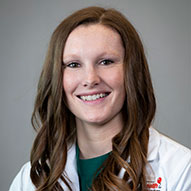Plano
469-303-3000
Fax: 469-303-4520
Frisco
469-303-3000
Fax: 469-303-4520
Prosper
469-303-3000
Fax: 469-303-4520
Request an Appointment with codes: Andrews Institute (Sports Medicine)
469-303-3000
Fax: 469-303-4520
469-303-3000
Fax: 469-303-4520
469-303-3000
Fax: 469-303-4520
Request an Appointment with codes: Andrews Institute (Sports Medicine)
If there’s a chance the anterior cruciate ligament (ACL) has stretched or torn inside your child’s knee, we know you don’t want to wait. We perform needed tests, make an accurate diagnosis and give you a clear plan as soon as possible.
Our goal is to use the most effective and least invasive treatment possible. If surgery is needed, our surgeons specialize in minimally invasive procedures like arthroscopy and use sophisticated techniques that protect your child’s growing bones. We also treat other injuries associated with ACL injuries:
ACL tears are one of the most common knee injuries. Together, our team of surgeons, nurses and in-house physical therapists will tailor treatment to your child’s unique condition and provide comprehensive care. We will minimize pain and enable a return to sports and other daily activities.
The ACL is one of the four major ligaments inside the knee, connecting the back of the thighbone with the front of the shinbone. The ACL stabilizes the knee while it pivots, so injuries can happen in sports with sudden cuts, jumps or twists like soccer, football and basketball.
We advise parents to treat ACL injuries as soon as possible, to avoid further damage and minimize pain and discomfort. Common causes of ACL injuries include:
Girls — and especially female athletes — face a greater risk of ACL injury because of anatomical differences like pelvic width. Other causes can include muscle strength imbalance and problems landing.
ACL injuries are commonly linked with a “popping” sound followed by swelling. Signs and symptoms can vary from child to child, though, and can include:
At the Andrews Institute, our experienced physicians start with a physical exam of your child’s knee to help determine if the ACL is torn. We may also order imaging scans such as an X-ray or MRI to confirm the diagnosis and look for other knee injuries.
Your child’s physical evaluation may include:
Diagnostic testing may include:
If your child is diagnosed with an ACL injury, we work with you to develop a comprehensive treatment plan. Treatment options depend on several factors, including:
For a mild ACL sprain, your physician may recommend initial treatment to reduce pain and discomfort and strengthen the muscles around your child’s knee. Non-surgical treatments include:
If the ACL is either partially or completely torn, we may recommend surgery:
Our expert pediatric surgeons use advanced techniques to protect your child’s growing bones. They also typically (whenever possible) take a minimally invasive, arthroscopic approach. Benefits of minimally invasive surgery include:
After surgery, our physicians work collaboratively with in-house physical therapists to create an individualized rehabilitation plan for your child’s unique needs.













Make an appointment to see a pediatric orthopedic physician. The physician will examine your child’s knee, take imaging scans and diagnose your child’s knee injury. We advise seeking treatment as soon as possible to prevent further injury.
Possibly. It depends on the severity of the ACL injury and your child’s desire to make a quick return to sports. Our physicians specialize in treating ACL injuries in growing children with minimally invasive arthroscopic surgery that avoids their open growth plates. Your physician will discuss a clear treatment plan with you on your first visit.